How To Make an Emergency Signal Fire
Each year, millions flock to the outdoors for wilderness excursions like hiking, fishing, and camping. And while most outings go off without a hitch, trouble can strike quickly and unexpectedly. Vehicles break down, maps/compasses get misplaced and damaged, and hikers wander too far from trails and signposts. An ordinary situation quickly becomes an emergency, and it happens all too often. Just ask busy forest rangers.
So if you’re one of the unlucky ones who finds themselves stranded, lost, or incapacitated outdoors, you’ll need a way to alert rescuers to your precise location. Shotguns, flares, and whistles will do the trick if others are close by, but the smoke from a signal fire covers far more distance and can be seen from the air.
Read on to learn how to build a proper signal fire, as one could be the difference between imminent rescue and certain disaster.
Choose The Right Location
Ideally, you’ll want to build your signal fire on an elevation, such as a hilltop, peak, or ridge. But if you can’t reach elevation, a flat clearing should suffice. Next, clear a three foot radius of ground area so that it’s free of combustible branches, twigs, and leaves. The last thing you want is your fire accidently spreading beyond your control, making an already urgent situation worse. If it’s impossible to clear your area of combustible debris, at least line the area with rocks and stones to contain the fire.
Gather the Necessary Materials
All fires need three elements: heat, burning materials and air. First, gather the burning materials, beginning with tinder, which is the easiest to ignite. Dry grass, pine needles, paper scraps, cotton, wood shavings, and even an old bird’s nest makes good tinder. Then look for kindling, such as small sticks and branches. Finally, collect your slow-burning, long-lasting fuel in the form of full-sized branches and logs. The dryer, the better.
Additionally, once your fire is ablaze, you’ll want to add materials that create thick or dark plumes of highly visible smoke. Living, leafy, and wet branches, rubber, peat moss, and oil work great here, so gather those as well.
Arrange The Gathered Materials
Layer your materials in a pyramid shape, with the tinder on bottom, followed by the kindling, then the fuel on top. You may need to use tree branches or sticks to create a makeshift rack, to separate the burning materials and allow air to flow through unobstructed.
Light the Fire
Once the materials are in place, it’s time to light the fire. You can generate the necessary spark with a variety of implements, including:
- Ordinary matches
- Cigarette lighters
- Flint and steel strikes
- Torch lighters
- Magnifying glass or prescription glasses
- Flares
- Fire Starter Tools
If you happen to be without any of these essential wilderness items, forcefully and rapidly scrape a rock with an axe or knife to generate a spark for igniting the tinder. Also, protect the initial sparks by blocking any incoming wind. Once the flames grow and the fuel is ignited, your fire should last a long while.
Apply the Smoke-Producing Materials
Depending on your situation, you may either want a continuous signal fire, or a just a quick one when you think rescuers are close by but you need to conserve materials. Either way, apply your wet leaves, living branches, and rubber when ready. The thick plume of smoke will rise above thick forest canopies, and will be visible for miles.
Don’t forget to fully extinguish your signal fire when rescuers arrive or you depart your location. This where the aforementioned rock barrier will come in handy, as it will block any smoldering embers you missed. The last thing you want is a raging forest fire resulting from your attempt to get to safety.
For more information on how to start an emergency signal fire as well as our emergency fire starter selection that is designed for these situations, please contact LiveFireGear.com at (866) 506-7053.


















